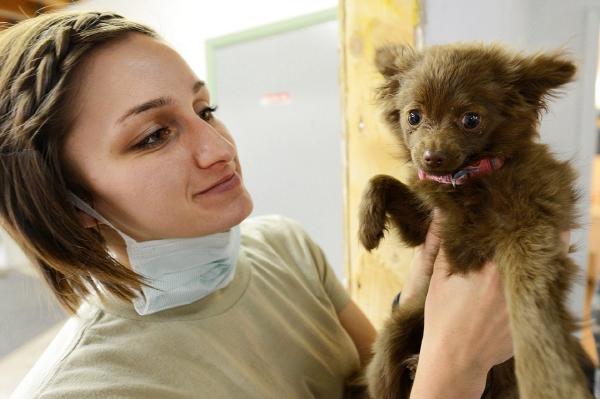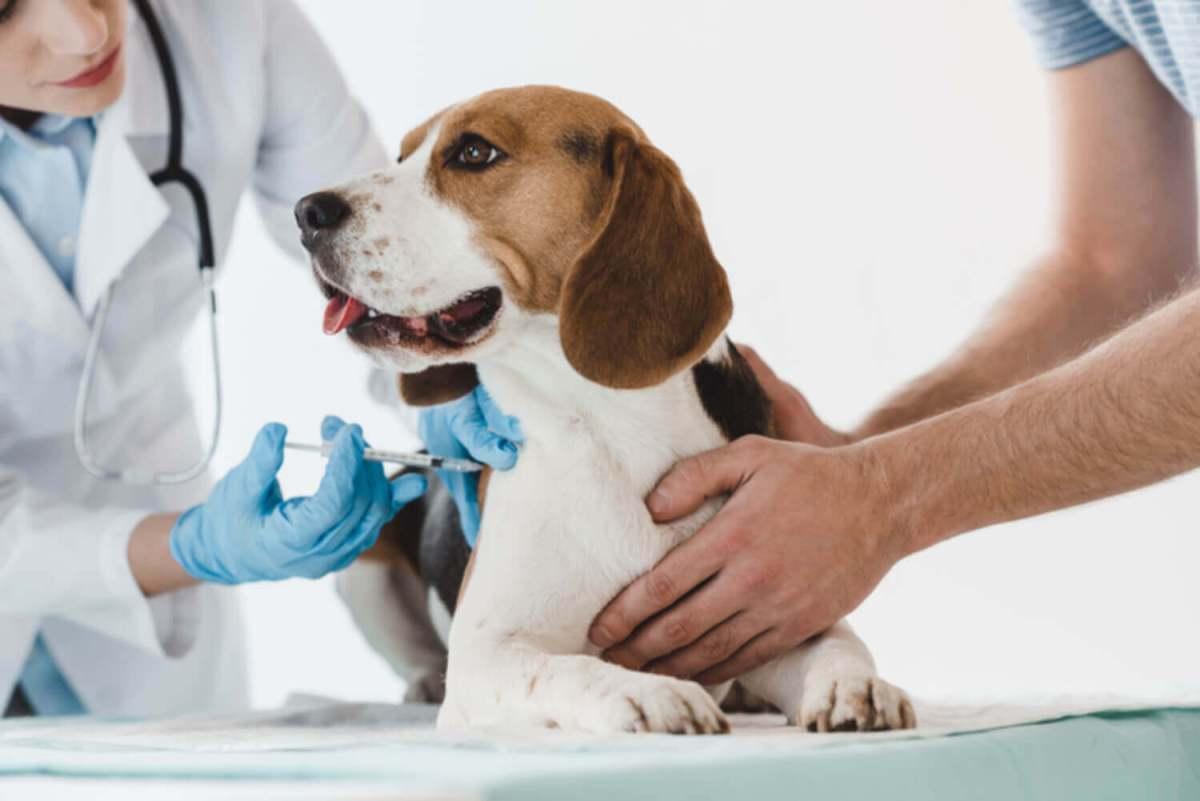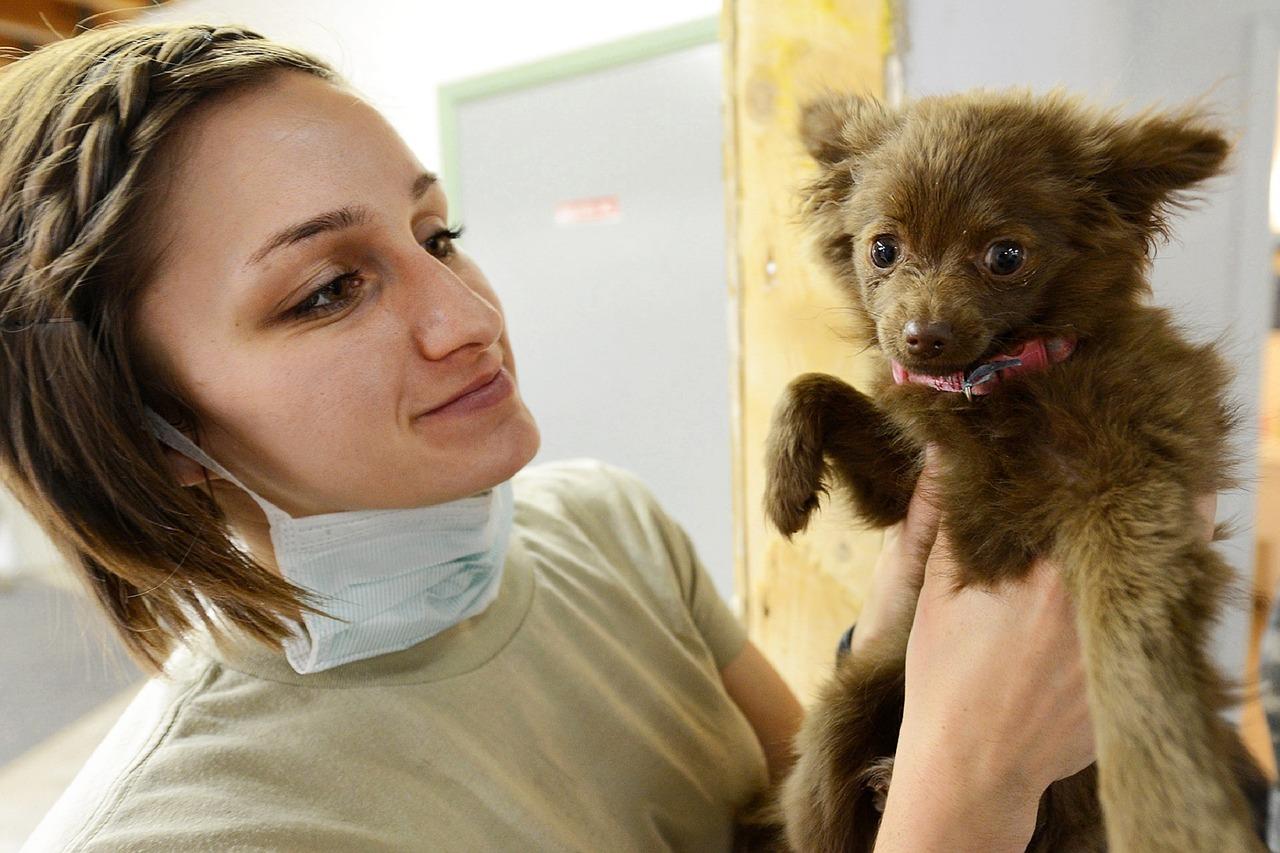How to Give a Dog a Shot Under the Skin



See files for Dogs
Reasons why your dog needs a shot generally fall into two categories, preventive medicine and curative care. The former includes vaccinations which are usually administered to puppies, although a booster shot may be required later on. Curative medicine injections are used to treat a condition or a disease. This could be a one-off shot or course of injections, perhaps to fight off an infection. Regular shots may be required if they have a health condition such as diabetes.
The type of medication and reason for the injection will dictate the type of shot administered to the dog. The two main ones are subcutaneous and intramuscular injections, although there are other types such as intravenous injections. Deciding what type of shot is needed is something only a trained veterinary medical professional can assess. However, if you are wondering how to give a dog a shot under the skin, AnimalWised can help you know what to expect or refresh your memory after a veterinary appointment.
Difference between subcutaneous and intramuscular injections
Before we explain how to give your dog a shot under the skin, we need to explain the different types of injection a dog might receive. Each injection has optimal injection sites on the dog. This is because they are better able to access the type of tissue correlating to the activation of the drug. You may have experienced this yourself when receiving injections. You will be more likely to receive an intravenous shot in the arm because it is easier to reach a vein here than in a place covered in more muscle or fatty tissue.
There will be a reason a dog needs an injection over a different type of medication such as those administered orally. It could be because the medication needs to act more quickly and injections will often do so. Additionally, some medicines are unable to be absorbed via the digestion process and therefore will be ineffectual when administered orally.
The two main types of shot a dog will be given are:
- Subcutaneous injections: these are the type of shot injected under the skin. They do not go deep into the muscle and only seep into the tissue just underneath the epidermis. There are much fewer veins in this area and so you shouldn't be able to inject intravenously, even accidentally. They are most commonly injected in the neck at the withers, the part between the shoulders at the top of the spine.
- Intramuscular injections: while you have to pierce the needle under the skin, you go beyond the layer just under the skin (subcutaneous) and go deeper into the actual muscle. These shots are usually injected in the hip as this is usually a very accessible area. They work faster than subcutaneous injections because there is more blood to absorb the medication.
The shot will come with a syringe and the needle will usually be attached. Sometimes you will have to pull the liquid medication into the syringe from a vial. However, often the syringe is pre-prepared with the correct dosage of medicine already in it.
Risks of giving your dog a shot
As we said above, you will only be giving your dog a shot under the skin or anywhere else because the vet has prescribed you to. While it is a simple enough procedure once you know how to do it, there are risks of not administering the injection properly. One of the main ones is if your dog has an allergy to any given drug, then they might have a reaction. If the injection is not given for the first time at the veterinary clinic, then it might be difficult to get them the right medical treatment in case of a reaction.
Another possibility if that you might give the dog a shot in the wrong place. If the shot is supposed to be subcutaneous, but is administered intravenously, it could make the canine feel ill. Hygiene is also very important, so it is essential you give your dog a shot which is clean and won't cause a secondary infection.
To best reduce any risks or complications of giving your dog a subcutaneous injection at home, your vet should provide a demonstration at the clinic. This way you can see how it is done up close and ask questions to relieve any doubt. You will not likely have to give an intravenous shot as they are usually only needed for serious conditions and need more skill and experience to administer.
What shots do dogs need?
As we state above, there are different reasons a dog will need a shot. Here are some of the types of injections a dog may require, many which will not be administered at home:
- Vaccinations: vaccines for dogs help to stop the spread of various diseases. They are usually administered when they are a puppy between 6 and 16 weeks of age. However, booster shots may need to be given every 1 to 3 years. The type of vaccination will depend on the region and country.
- Rabies: while rabies is fortunately very rare, this is thanks to inoculation shots rolled out over a long time. If a dog is bitten by an animal which may be rabid, a series of rabies shots will be given to stop the disease spreading to the brain.
- Antibiotics: if your dog suffers and infection, they may be prescribed a course of antibiotics such as penicillin. This will be done by your vet and it is important you never give antibiotics to a dog which have not been explicitly prescribed.
- Diabetes: diabetic dogs will be given insulin injections daily with the schedule arranged after diagnosis.
- Neutering: non-surgical neutering for dogs is available and may require shots under the skin to be administered at home. However, they are not as effective and do not have the additional benefits sterilization provides.
- Dermatitis: dermatitis or other skin problems may be treated with certain shots administered by syringe.
- B12 injection: if your dog has poor immunity or simply needs their strength up after an illness, they may be prescribed a vitamin B12 or similar injection.
There are many other diseases and conditions which will need treatment with injected medication, but these give you a general idea of what they may be used for.

General considerations for injecting a dog at home
Below we will show you the steps you need to give a dog a shot under the skin, but there are some general considerations you may need to make. They include:
- Ensure you are clear what type of shot is being administered, whether subcutaneous or intramuscular. Make sure you are able to keep the dog calm and quiet. If we have doubts or our dog is often hyperactive and moves around a lot, we should ask someone else to help restrain them.
- Only use syringes and needles the vet has prescribed. There are different formats and sizes of needle and you can cause harm when using the wrong one.
- Once we fill the syringe with medication, we need to direct the needle upwards and tap it lightly to ensure any air reaches the top. We can then expel it, but need to ensure we don't waste any medication. Doing so can lower the required dosage.
- After the shot has been prepared, keep it nearby, but hide it before your dog sees it. As you will be administering the shot behind their view, you should prevent them from seeing the syringe as best you can. This means they won't be as likely to get anxious next time around.
- Disinfect the injection site.
- Once we puncture under the skin, we need to pull the syringe back a little bit. We do this to ensure no blood comes out. If blood does enter the syringe, then we have hit a vein or artery. If this is the case, we will need to inject the shot again so that this does not happen.
- After the shot has been administered under the skin and removed, we can rub the area gently to help the medication spread.
- When giving a puppy a shot, you will need to ensure they are able to sit peacefully, but they are generally easier to control.
All of these considerations are those made by the vet every time they administer a shot. Pet guardians will need to be extra careful as the majority will not have the same experience.
How to give a dog a subcutaneous shot
After you have made these considerations, here are the steps to give your dog a subcutaneous shot at home:
- Pinch the back of the neck gently so that they will get used to you being there. Pinch a fold of skin in the neck gently, but firmly with one hand.
- Introduce the needle under the skin so that it goes into the subcutaneous fat.
- Pull the plunger of the syringe back to test for a vein (see above).
- Push the plunger until you have administered the correct dosage.
- Remove the needle and rub the area to spread it around.
Following these instructions will be help you inject your dog's daily insulin shots if they are a diabetic dog. When a dog is diagnosed with diabetes, your vet should explain how they are given under the skin. However, diabetes also needs rigorous monitoring and control of the dosages of insulin given. Your vet will also show you how to prepare and preserve the insulin. They will also show you what to do in the unfortunate case an overdose occurs.
How to give an intramuscular shot to a dog
In addition to subcutaneous injections, an intramuscular show may be given using the following steps:
- The insertion point should be on the thigh, in the hip or even in the neck (although this last one can be tricky).
- Ensure the area you have chosen has enough muscle and that you won't hit a bone.
- You don't need to pinch the skin, but ensure the dog is calm and introduce the syringe slowly.
- Push the plunger slowly and introduce the medication.
- Rub the area to spread the medication.
These injections will not be as likely prescribed for home use. They are more commonly used at the clinic for vaccinations and booster shots.

If you want to read similar articles to How to Give a Dog a Shot Under the Skin, we recommend you visit our Basic care category.






